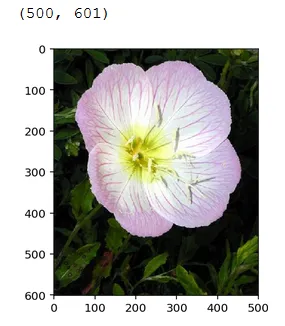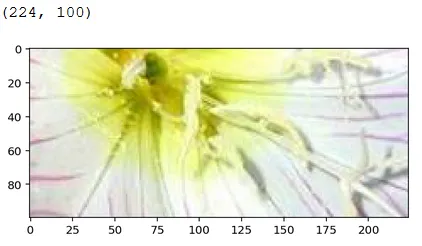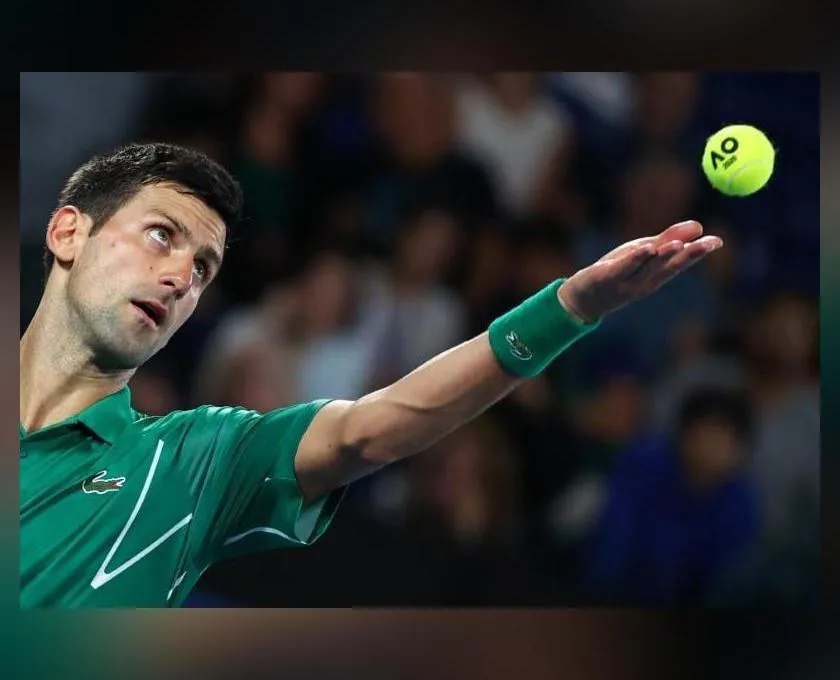我如何在中心裁剪图片?因为我知道这个框是一个4元组,定义了左、上、右和下像素坐标,但我不知道如何获取这些坐标,以便它在中心裁剪。
使用PIL在中心裁剪图像
1
import Image
im = Image.open(<your image>)
width, height = im.size # Get dimensions
left = (width - new_width)/2
top = (height - new_height)/2
right = (width + new_width)/2
bottom = (height + new_height)/2
# Crop the center of the image
im = im.crop((left, top, right, bottom))
如果您尝试将小图像裁剪为更大的大小,这将会导致失败,但我假设您不会尝试那样做(或者您可以捕获该情况并不裁剪该图像)。
6
im.crop() 方法不会就地裁剪图像,而是返回裁剪后的图像。因此,需要使用 im=im.crop((left, top, right, bottom)) 来更新原始图像。 - jeanggi90width, height = 357,450,new_width = new_height = 357你最终得到一张357x358像素的图像。您必须做出明确的决定,在哪里裁剪额外的像素,这种情况下可以选择在顶部或底部裁剪。 - tuky提出的解决方案存在一个潜在问题,即所需大小与旧大小之间存在奇数差异。每一边都不能有半个像素。必须选择一侧多加一个像素。
如果水平方向存在奇数差异,则下面的代码将把额外的像素放在右侧;如果垂直方向存在奇数差异,则将额外的像素放在底部。
import numpy as np
def center_crop(img, new_width=None, new_height=None):
width = img.shape[1]
height = img.shape[0]
if new_width is None:
new_width = min(width, height)
if new_height is None:
new_height = min(width, height)
left = int(np.ceil((width - new_width) / 2))
right = width - int(np.floor((width - new_width) / 2))
top = int(np.ceil((height - new_height) / 2))
bottom = height - int(np.floor((height - new_height) / 2))
if len(img.shape) == 2:
center_cropped_img = img[top:bottom, left:right]
else:
center_cropped_img = img[top:bottom, left:right, ...]
return center_cropped_img
1
right = width - floor((width - new_width) / 2)。 - panda-34我感觉对于大多数应用来说,最简单的解决方案仍然缺失。已接受的答案存在像素不平衡的问题,特别是对于机器学习算法而言,裁剪图像的像素数量至关重要。
在以下示例中,我想将图像从中心裁剪为224/100。我不在意像素是否向左或向右偏移0.5,只要输出图片始终符合定义的尺寸即可。这避免了对数学的依赖。*
from PIL import Image
import matplotlib.pyplot as plt
im = Image.open("test.jpg")
left = int(im.size[0]/2-224/2)
upper = int(im.size[1]/2-100/2)
right = left +224
lower = upper + 100
im_cropped = im.crop((left, upper,right,lower))
print(im_cropped.size)
plt.imshow(np.asarray(im_cropped))
输出结果是裁剪前的(在代码中未显示):
 裁剪后:
裁剪后:
 元组显示了尺寸。
元组显示了尺寸。这是我在寻找的函数:
from PIL import Image
im = Image.open("test.jpg")
crop_rectangle = (50, 50, 200, 200)
cropped_im = im.crop(crop_rectangle)
cropped_im.show()
以下内容摘自另一个答案
我最初使用了被接受的答案:
import Image
im = Image.open(<your image>)
width, height = im.size # Get dimensions
left = (width - new_width)/2
top = (height - new_height)/2
right = (width + new_width)/2
bottom = (height + new_height)/2
# Crop the center of the image
im = im.crop((left, top, right, bottom))
但是我遇到了Dean Pospisil提到的问题
所提出的解决方案可能存在一个潜在的问题,就是在所需大小和旧大小之间存在奇数差异的情况下。你无法在每一侧都有半个像素。必须选择一侧来多放一个像素。
Dean Pospisil的解决方案可行,我也想出了自己的计算方法来解决这个问题:
import Image
im = Image.open(<your image>)
width, height = im.size # Get dimensions
left = round((width - new_width)/2)
top = round((height - new_height)/2)
x_right = round(width - new_width) - left
x_bottom = round(height - new_height) - top
right = width - x_right
bottom = height - x_bottom
# Crop the center of the image
im = im.crop((left, top, right, bottom))
采用接受的答案,一个尺寸为180px x 180px的图片裁剪成180px x 101px会得到一个裁剪后的图片尺寸为180px x 102px。
按照我的计算,应该正确地裁剪成180px x 101px。
可能我来晚了,但至少我到了这里。
我想要中心裁剪图像,将9:16的图像转换成16:9的纵向或横向。
这是我使用的算法:
- 将图像分为4个相等的部分
- 丢弃第1部分和第4部分
- 将左侧设置为0,右侧设置为图像的宽度
代码:
from PIL import Image
im = Image.open('main.jpg')
width, height = im.size
if height > width:
h2 = height/2
h4 = h2/2
border = (0, h4, width, h4*3)
cropped_img = im.crop(border)
cropped_img.save("test.jpg")
before :
后续:
def im_crop_around(img, xc, yc, w, h):
img_width, img_height = img.size # Get dimensions
left, right = xc - w / 2, xc + w / 2
top, bottom = yc - h / 2, yc + h / 2
left, top = round(max(0, left)), round(max(0, top))
right, bottom = round(min(img_width - 0, right)), round(min(img_height - 0, bottom))
return img.crop((left, top, right, bottom))
def im_crop_center(img, w, h):
img_width, img_height = img.size
left, right = (img_width - w) / 2, (img_width + w) / 2
top, bottom = (img_height - h) / 2, (img_height + h) / 2
left, top = round(max(0, left)), round(max(0, top))
right, bottom = round(min(img_width - 0, right)), round(min(img_height - 0, bottom))
return img.crop((left, top, right, bottom))
from PIL import Image
from torchvision.transforms import functional as F
crop_size = 256 # can be either an integer or a tuple of ints for (height, width) separately
img = Image.open(<path_to_your_image>)
cropped_img = F.center_crop(img, crop_size)
F.center_crop 适用于 torch.Tensor 或 PIL.Image,并保留数据类型,即当输入为 PIL.Image 时,输出也是一个(裁剪后的)PIL.Image。另外一个好处是,如果输入图像尺寸小于所需的裁剪尺寸,则上述转换会自动应用填充。
from PIL import Image, ImageOps
pixels_to_remove = 32
img = Image.open(img_path)
img = ImageOps.crop(input_img, border=pixels_to_remove)
原文链接

